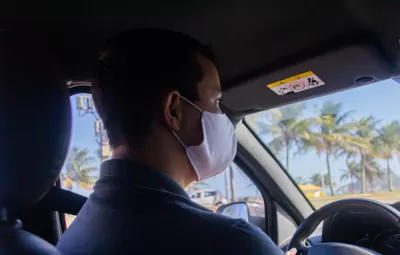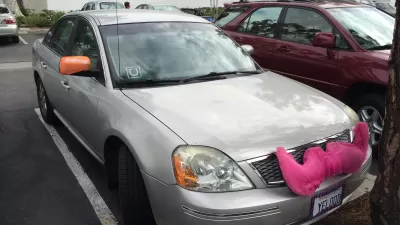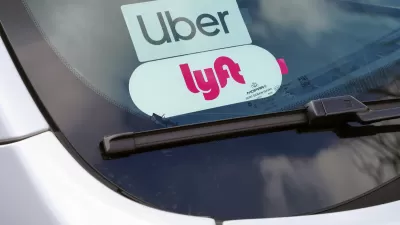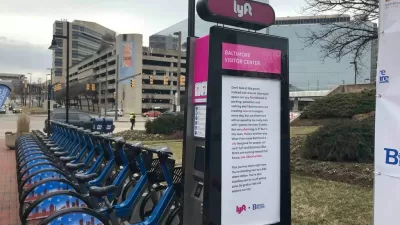With pooled services suspended through the pandemic and research showing most users prefer private rides, will shared rides continue to play a role in urban transportation?

As ride-hailing companies like Uber and Lyft faced backlash for producing more urban congestion with single-passenger trips, "pooled service seemed to offer a more city-friendly product," and autonomous vehicle producers also designed multi-person pods in preparation for a future of shared-ride transit. But with shared services largely on hold since the start of the pandemic, David Zipper, writing in Bloomberg CityLab, asks whether shared transportation can recover.
Back in February 2018, the nonprofit World Resources Institute unveiled the Shared Mobility Principles for Livable Cities, a set of guidelines that "included a commitment that autonomous vehicles would offer only shared trips within urban areas," according to Zipper. Since then, "a slew of evidence suggests that those who can afford to hail a vehicle would really prefer to have it to themselves," which is "worrisome news for public officials who hoped shared rides could help curb congestion — and for mobility companies who’ve pointed to sharing as a reason their products wouldn’t condemn cities to gridlock." While "sharing trips with strangers is the basic principle behind riding public transportation," sharing rides in private vehicles feels different than larger conveyances like trains or buses. "In a bad situation, you’re more likely to feel trapped in a ride-hail vehicle," making some users more reluctant to use shared rides even outside the public health risks posed by the pandemic.
Without policies to incentivize shared travel through increased convenience or lower cost, the dream of autonomous shared transit could devolve into a growing number of "individual AV trips grinding urban streets to a halt."
FULL STORY: Can Shared Mobility Survive the Pandemic?

Planetizen Federal Action Tracker
A weekly monitor of how Trump’s orders and actions are impacting planners and planning in America.

Congressman Proposes Bill to Rename DC Metro “Trump Train”
The Make Autorail Great Again Act would withhold federal funding to the system until the Washington Metropolitan Area Transit Authority (WMATA), rebrands as the Washington Metropolitan Authority for Greater Access (WMAGA).

The Simple Legislative Tool Transforming Vacant Downtowns
In California, Michigan and Georgia, an easy win is bringing dollars — and delight — back to city centers.

The States Losing Rural Delivery Rooms at an Alarming Pace
In some states, as few as 9% of rural hospitals still deliver babies. As a result, rising pre-term births, no adequate pre-term care and harrowing close calls are a growing reality.

The Small South Asian Republic Going all in on EVs
Thanks to one simple policy change less than five years ago, 65% of new cars in this Himalayan country are now electric.

DC Backpedals on Bike Lane Protection, Swaps Barriers for Paint
Citing aesthetic concerns, the city is removing the concrete barriers and flexposts that once separated Arizona Avenue cyclists from motor vehicles.
Urban Design for Planners 1: Software Tools
This six-course series explores essential urban design concepts using open source software and equips planners with the tools they need to participate fully in the urban design process.
Planning for Universal Design
Learn the tools for implementing Universal Design in planning regulations.
Smith Gee Studio
City of Charlotte
City of Camden Redevelopment Agency
City of Astoria
Transportation Research & Education Center (TREC) at Portland State University
US High Speed Rail Association
City of Camden Redevelopment Agency
Municipality of Princeton (NJ)





























